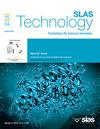Causal role of endothelial dysfunction in ischemic stroke and its subtypes: A two-stage analysis
IF 3.7
4区 医学
Q3 BIOCHEMICAL RESEARCH METHODS
引用次数: 0
Abstract
Objective
Endothelial dysfunction is implicated in the pathogenesis of ischemic stroke (IS), but its causal role remains unclear. This study systematically investigates the causal relationship between endothelial dysfunction proteins and IS and its subtypes through integrated observational and genetic evidence.
Methods
A two-stage study was conducted combining systematic meta-analysis and Mendelian randomization (MR). The meta-analysis integrated data from 29 observational studies to assess associations between endothelial dysfunction proteins (vWF, sE-selectin, sP-selectin, ICAM-1, VCAM-1, sLOX-1, VEGF, ET-1, SDF-1) and IS. This meta-analysis was registered online (PROSPERO ID: CRD42023461783). Subsequent MR was applied to discern the causal effects of the endothelial dysfunction proteins on IS and its subtypes, utilizing genetically instrumental variants.
Results
A meta-analysis demonstrated significant correlations with IS for vWF, sE-selectin, ICAM-1, sP-selectin, sLOX-1, and VEGF (all p < 0.05). Furthermore, MR analysis showed that genetically elevated vWF increased the risk for any IS and cardioembolic stroke (CES), while E-selectin was causally linked to large-artery atherosclerosis stroke (LAS).
Conclusion
This work offers causal evidence that endothelial dysfunction significantly contributes to IS, highlighting the thrombotic activity of vWF in CES and the inflammatory function of E-selectin in LAS. These findings not only offer valuable insights into the mechanisms underlying IS and its subtypes but also help inform personalized stroke prevention strategies.
缺血性卒中及其亚型中内皮功能障碍的因果作用:两阶段分析。
目的:内皮功能障碍与缺血性卒中(is)的发病机制有关,但其因果关系尚不清楚。本研究通过综合观察和遗传证据系统地探讨了内皮功能障碍蛋白与IS及其亚型之间的因果关系。方法:采用系统荟萃分析和孟德尔随机化(MR)相结合的两阶段研究。荟萃分析整合了29项观察性研究的数据,以评估内皮功能障碍蛋白(vWF、sE-selectin、sP-selectin、ICAM-1、VCAM-1、sLOX-1、VEGF、ET-1、SDF-1)与IS之间的关系。该荟萃分析已在线注册(PROSPERO ID: CRD42023461783)。随后的MR应用于识别内皮功能障碍蛋白对IS及其亚型的因果影响,利用遗传工具变异。结果:一项荟萃分析显示vWF、se -选择素、ICAM-1、sp -选择素、sLOX-1和VEGF与IS有显著相关性(均为p)。结论:这项工作提供了内皮功能障碍显著促进IS的因果证据,突出了vWF在CES中的血栓形成活性和e -选择素在LAS中的炎症功能。这些发现不仅对IS及其亚型的潜在机制提供了有价值的见解,而且有助于为个性化的卒中预防策略提供信息。
本文章由计算机程序翻译,如有差异,请以英文原文为准。
求助全文
约1分钟内获得全文
求助全文
来源期刊

SLAS Technology
Computer Science-Computer Science Applications
CiteScore
6.30
自引率
7.40%
发文量
47
审稿时长
106 days
期刊介绍:
SLAS Technology emphasizes scientific and technical advances that enable and improve life sciences research and development; drug-delivery; diagnostics; biomedical and molecular imaging; and personalized and precision medicine. This includes high-throughput and other laboratory automation technologies; micro/nanotechnologies; analytical, separation and quantitative techniques; synthetic chemistry and biology; informatics (data analysis, statistics, bio, genomic and chemoinformatics); and more.
 求助内容:
求助内容: 应助结果提醒方式:
应助结果提醒方式:


